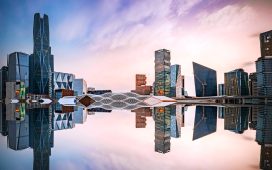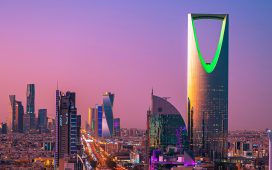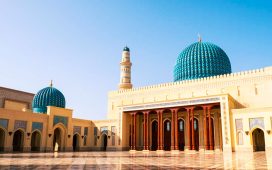Abu Dhabi, the capital of the United Arab Emirates, is a city that balances opulent modernity with deep-rooted tradition. It doesn’t shout with the same intensity as Dubai, but rather it unfolds gracefully, with wide boulevards, striking architecture, serene beaches, and a cultural depth that feels both authentic and refreshing. Exploring Abu Dhabi is like peeling back the layers of the Middle East: one moment you’re marveling at futuristic towers, and the next you’re walking through the echoes of centuries-old traditions.
History of Abu Dhabi
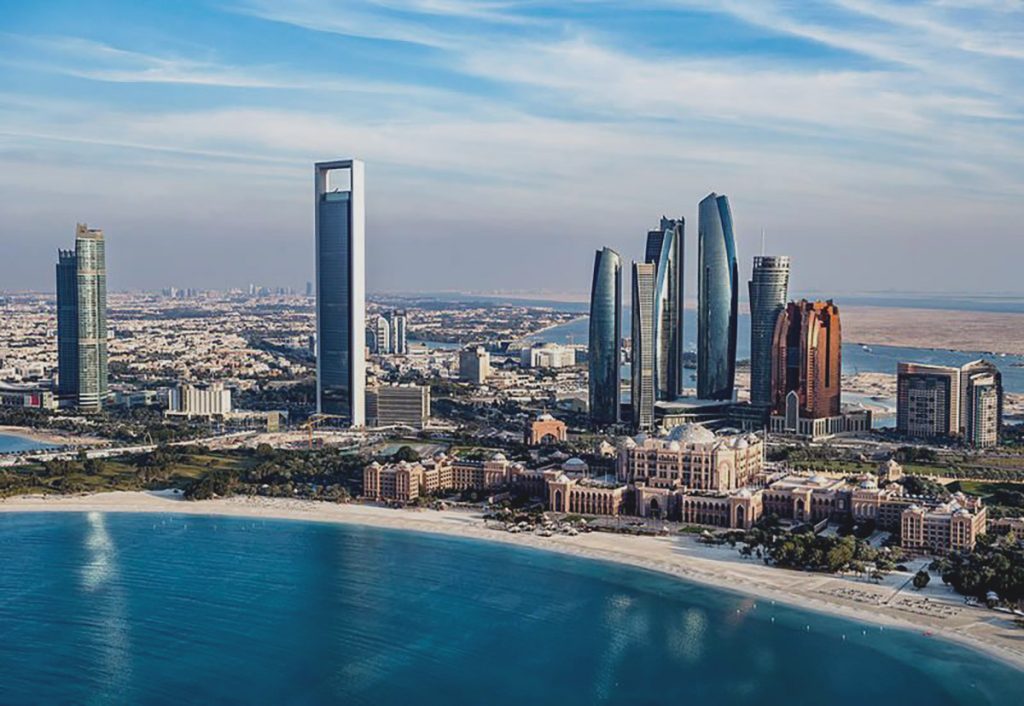
Abu Dhabi’s history is deeply tied to the desert and the sea. For centuries, Bedouin tribes lived here as nomads, fishermen, and pearl divers, sustaining a modest life along the Gulf. In the 18th century, the Bani Yas tribe, led by the Al Nahyan family, settled the area. The discovery of oil in the mid-20th century transformed Abu Dhabi almost overnight, turning it from a small coastal village into a wealthy, modern capital. Yet even with its futuristic skyline, Abu Dhabi honors its roots through heritage villages, falconry, and the preservation of its desert culture.
Landmarks and Architecture
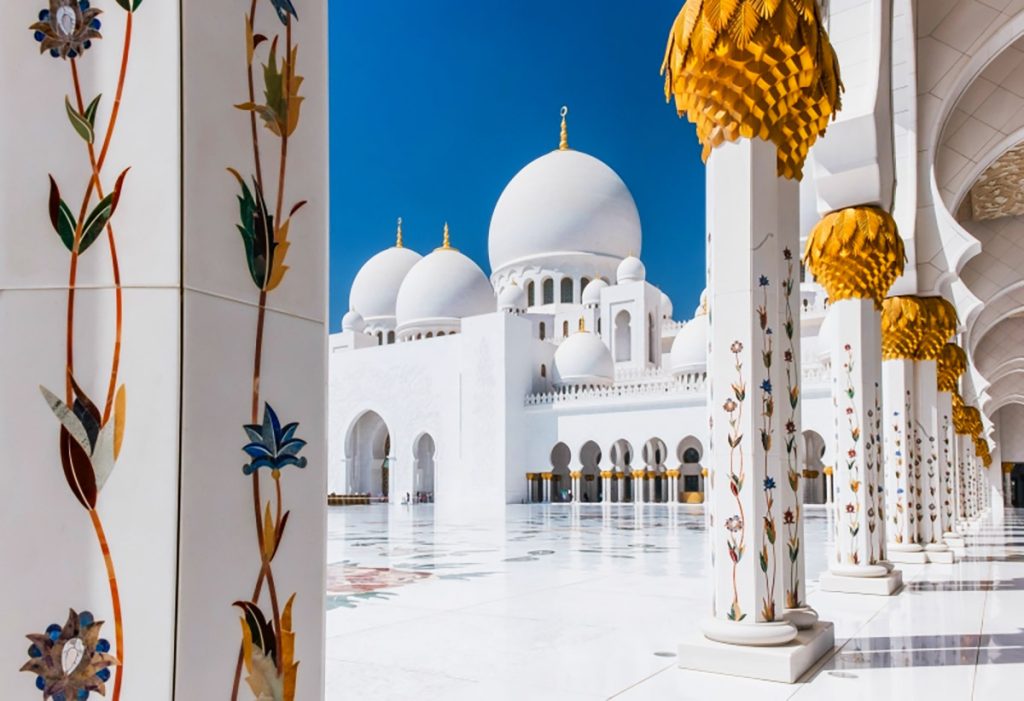
Sheikh Zayed Grand Mosque
No visit to Abu Dhabi is complete without standing in awe at the Sheikh Zayed Grand Mosque. Its dazzling white marble, reflecting pools, and 82 domes make it one of the most beautiful mosques in the world. Inside, you’ll find hand-woven carpets, massive chandeliers, and a sense of stillness that leaves a lasting impression.
Qasr Al Watan (Presidential Palace)
This palace isn’t just about political significance—it’s a living museum of Emirati artistry and history. Its domes, mosaics, and gardens showcase the craftsmanship and grandeur of the UAE.
Etihad Towers
A cluster of sleek skyscrapers that define the Abu Dhabi skyline. You can head to the observation deck for panoramic views that stretch from the city to the sea.
Museums and Culture
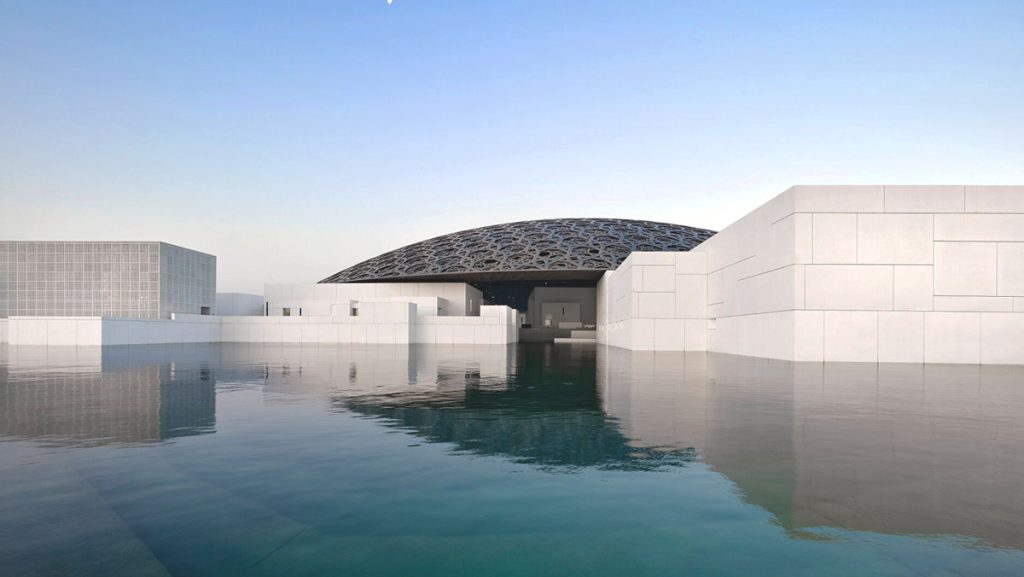
Louvre Abu Dhabi
Opened in 2017, the Louvre Abu Dhabi is the first museum of its kind in the Arab world and the result of a landmark 30-year agreement with the Louvre in Paris, granting it the name and access to works on loan from major French institutions. Designed by Jean Nouvel, it was conceived as a “museum-city,” with white geometric buildings connected by plazas and walkways rising from the sea. Its centerpiece is the 180-meter dome, a lattice of interwoven patterns inspired by Arabic mashrabiya, casting the spectacular “rain of light” across its courtyards. Built by a multinational joint venture led by Arabtec, San José, and Oger Abu Dhabi, the project cost over €1 billion and stands as a cultural bridge between East and West.

Qasr Al Hosn
The oldest stone building in Abu Dhabi, this fort turned museum offers a window into the city’s past. Walking through, you get a feel for how the capital evolved from a pearl-diving settlement to a global hub.
Manarat Al Saadiyat
A cultural center hosting exhibitions, film screenings, and performances, focused around the vision for Saadiyat Island as a hub of art and creativity.
Spotlight: Saadiyat Cultural District
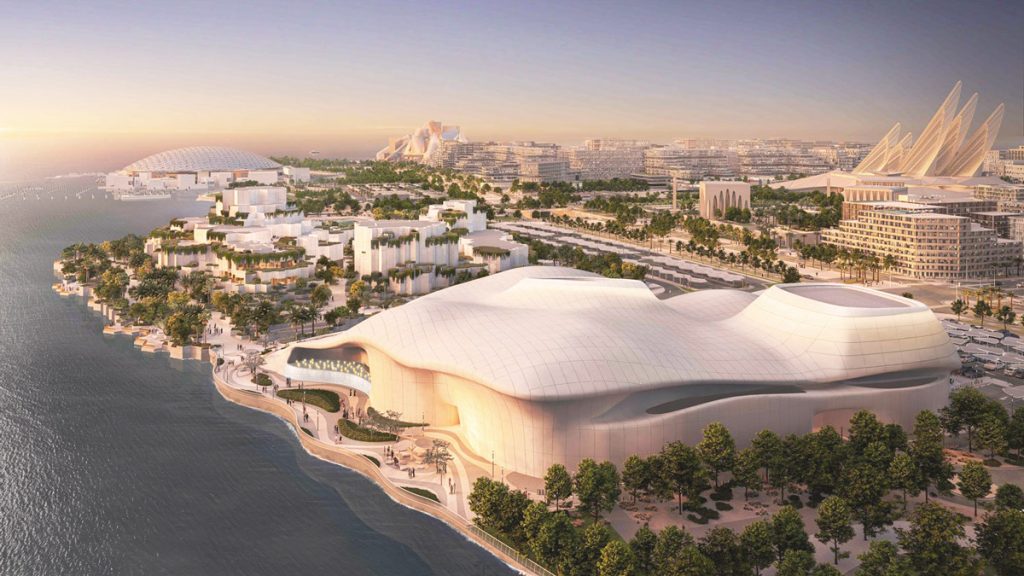
Abu Dhabi’s Saadiyat Cultural District is set to become a global capital of culture, bringing together art, history, science, and immersive experiences in one walkable hub. Together, these institutions will create one of the world’s most concentrated cultural destinations, blending global vision with Emirati heritage. Saadiyat is not just about housing museums; it’s about building a dialogue between civilizations and shaping Abu Dhabi’s role as a crossroads of art, knowledge, and innovation. For travelers, the district promises a rare chance to experience the world’s cultures in one stunning coastal setting.
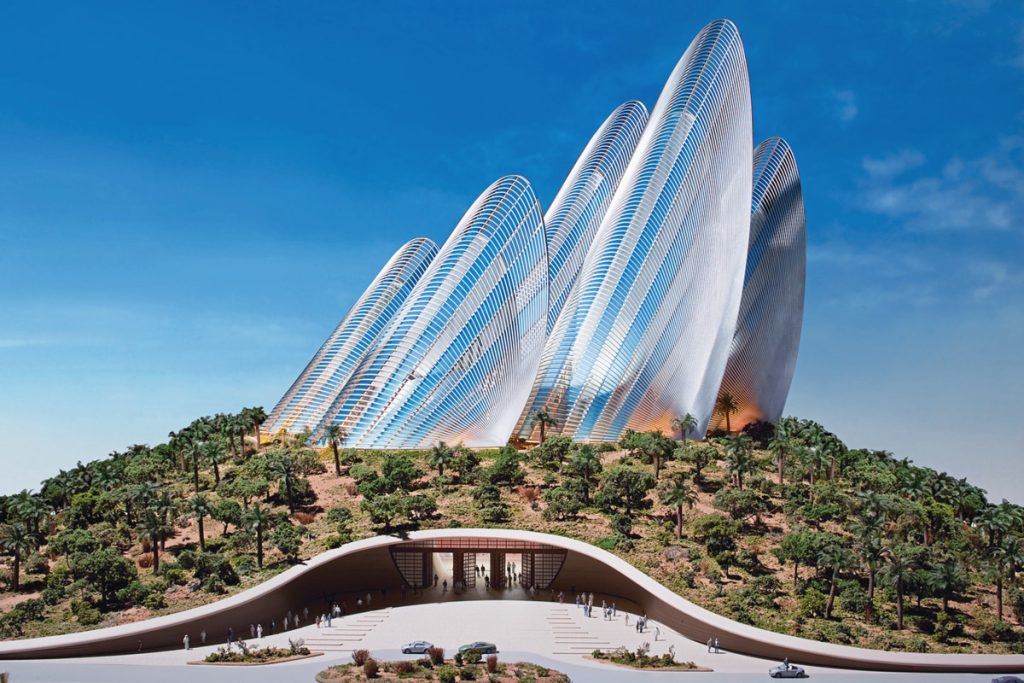
- Zayed National Museum – Opening in 2025, designed by Foster + Partners with falcon-wing architecture, telling the story of the UAE’s history and heritage.
- Louvre Abu Dhabi – The anchor of the district, designed by Jean Nouvel. Its iconic “floating dome” and diverse collection span civilizations and centuries.
- Manarat Al Saadiyat – A vibrant cultural center hosting exhibitions, performances, and community workshops.
- teamLab Phenomena Abu Dhabi – A recently opened immersive digital art space, blending technology and creativity in stunning interactive installations.
- Disney Resort (Upcoming) – While not directly inside the district, this new project reflects Abu Dhabi’s expansion into family-friendly cultural tourism.
- Natural History Museum Abu Dhabi – Dedicated to evolution, biodiversity, and the story of life on Earth, featuring fossils and cutting-edge science exhibits.
- Berklee Abu Dhabi – A performing arts and music education center nurturing talent and hosting live shows.
- Guggenheim Abu Dhabi – A massive Frank Gehry design, set to be the largest Guggenheim museum in the world, focusing on global and regional contemporary art.
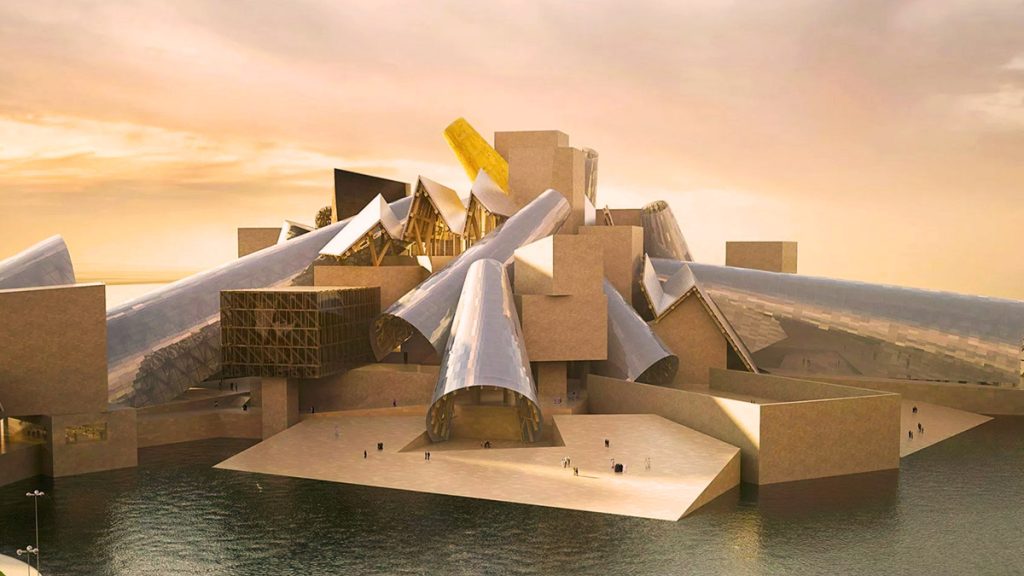
Food and Dining
Abu Dhabi is a playground for food lovers, blending Emirati heritage with international flavors.

- Fine Dining: From Hakkasan at the Emirates Palace to Zuma and LPM Restaurant & Bar, Abu Dhabi has no shortage of luxury dining experiences.
- Emirati Cuisine: Try machboos (spiced rice with meat or fish) and luqaimat (sweet fried dumplings). Restaurants like Al Fanar bring local flavors to life.
- Street Eats: Shawarma stalls and small cafés scattered around the city serve some of the best late-night bites.
Hidden Gems
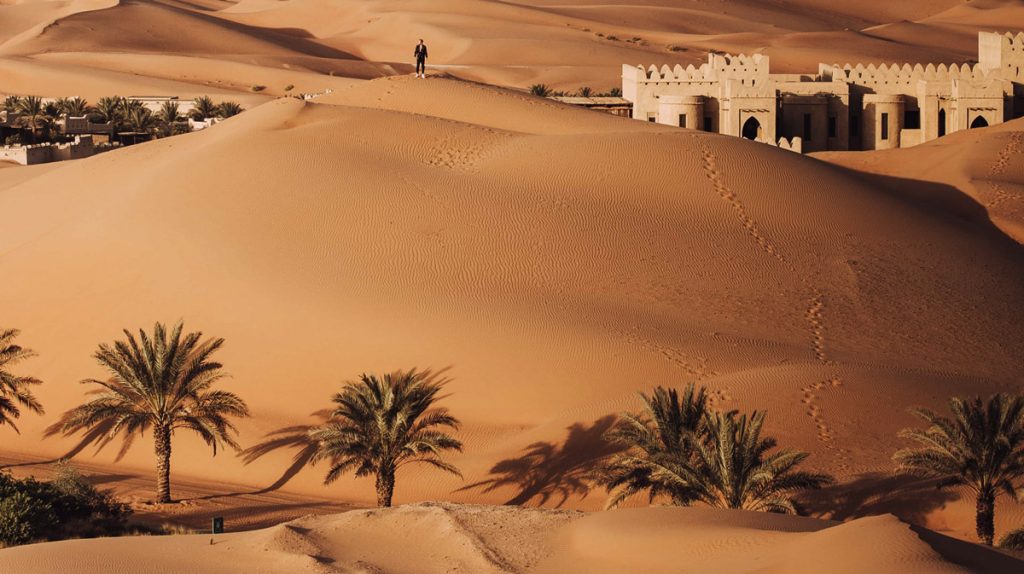
The Empty Quarter (Rub’ al Khali)
A desert experience like no other. Vast golden dunes stretch endlessly, offering a surreal escape. Many tour operators provide overnight desert safaris, complete with stargazing.
Heritage Village
A recreated traditional desert settlement where you can step back in time and see how Bedouin life once looked. From mud-brick houses to artisans weaving and crafting, it’s a charming way to understand Abu Dhabi before oil wealth transformed it.
Warehouse421
A contemporary art and design space tucked away in the Mina Zayed port area. It’s one of the city’s most creative enclaves, showcasing local and regional artists through exhibitions, workshops, and experimental installations.
Jubail Mangrove Park
A boardwalk through a protected mangrove reserve on Jubail Island. It’s quieter than the main Eastern Mangroves, offering wooden pathways where you can spot crabs, birds, and the rich tangle of mangrove roots up close.
Nature and Wildlife
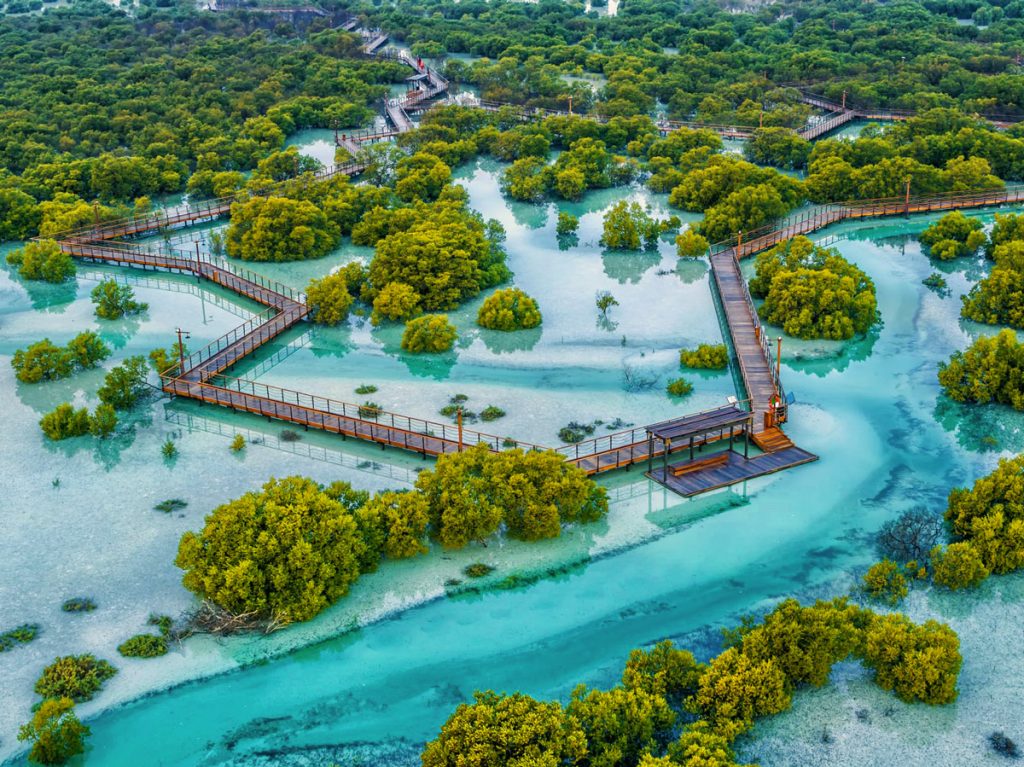
Eastern Mangroves National Park
Abu Dhabi may be known for its futuristic skyline, but just minutes from the city center lies a very different world: the mangroves. Spanning more than 19 square kilometers, the Eastern Mangroves form a thriving ecosystem that has sustained life along this coastline for centuries. These tangled roots and green canopies act as the city’s natural lungs, filtering the air, reducing carbon emissions, and providing a buffer that protects the shoreline from erosion.
For wildlife, the mangroves are a sanctuary. They shelter migratory birds such as flamingos, herons, and egrets, as well as fish nurseries, crabs, and even occasional sightings of dolphins in nearby waters. Beyond biodiversity, they are vital for the UAE’s fight against climate change — mangroves store up to four times more carbon than tropical rainforests, making them an ecological powerhouse.
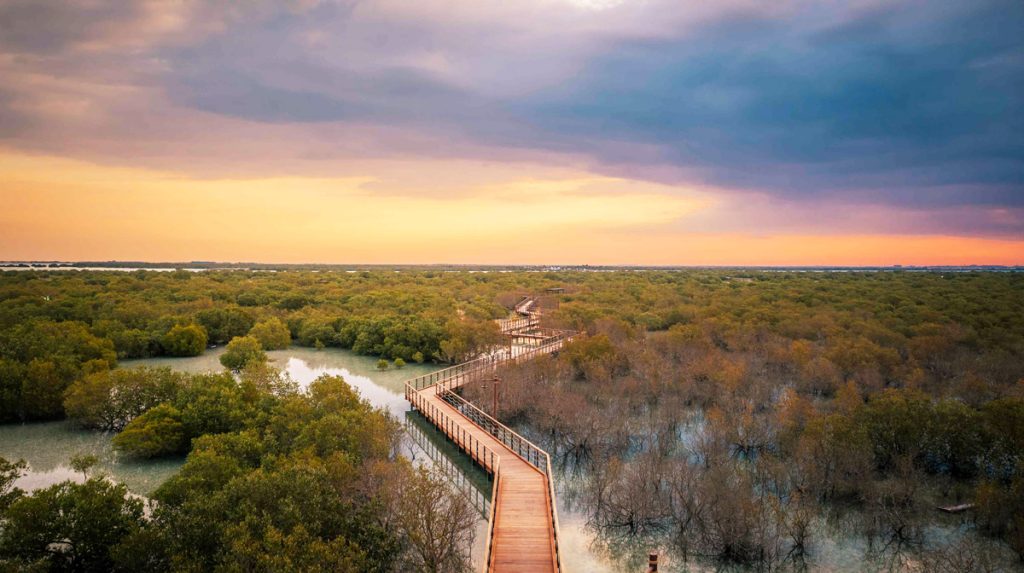
Culturally, the mangroves connect to Abu Dhabi’s pearl-diving past. Generations relied on their sheltered waters as breeding grounds for fish and as a natural barrier from the harsh Gulf winds. Today, visitors can kayak or paddleboard through calm channels, immersing themselves in a landscape that balances serenity with environmental significance. It’s not just a scenic escape, but a living classroom about the importance of conservation in the desert.
Sir Bani Yas Island

Lying just off Abu Dhabi’s coast, Sir Bani Yas Island is a striking example of the UAE’s commitment to conservation and eco-tourism. Nearly half the island is dedicated to the Arabian Wildlife Park, where over 17,000 animals roam free — from Arabian oryx and gazelles to giraffes, ostriches, and even cheetahs. The oryx, once nearly extinct, was reintroduced here, making the island a success story for species preservation in the region.
But Sir Bani Yas isn’t only about wildlife. It also holds cultural treasures, including the remains of a 7th-century Christian monastery, one of the oldest discovered in the Arabian Gulf, offering visitors a glimpse into the region’s diverse past.

For travelers, the island is an adventure playground. Guided safaris through the reserve feel like stepping into Africa, while kayaking, snorkeling, mountain biking, and hiking reveal the island’s rugged terrain and rich marine life. At day’s end, guests retreat to one of the island’s luxury eco-lodges operated by Anantara Hotels & Resorts, ranging from beachside villas to safari-style retreats nestled in the reserve.
Sir Bani Yas is more than a day trip — it’s a destination in its own right, blending wildlife conservation, cultural heritage, and luxury in one unforgettable setting.
Spas and Hammams
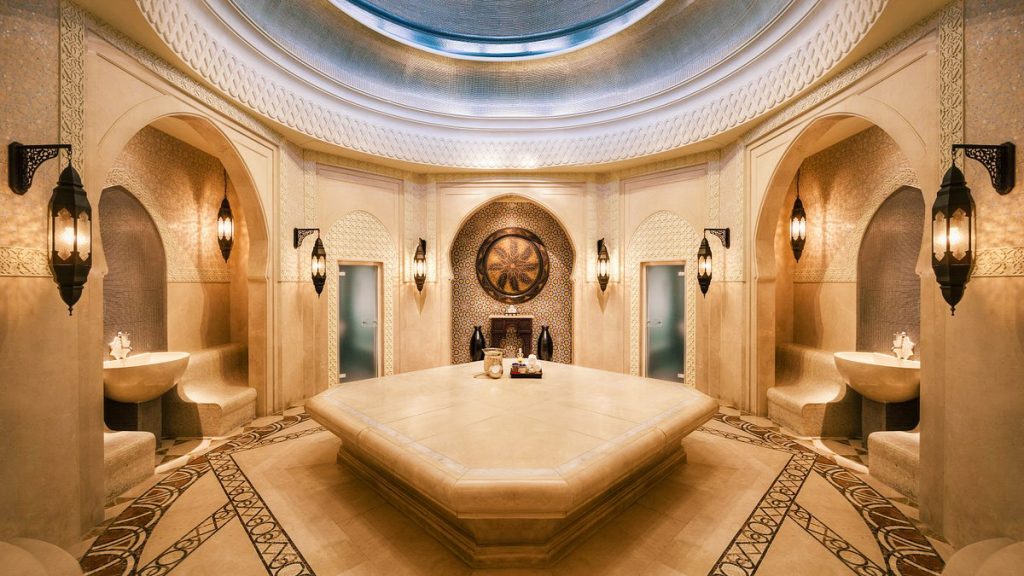
Abu Dhabi’s wellness scene is every bit as dazzling as its skyline. Here, spa culture blends Arabian tradition with ultra-modern luxury:
- Anantara Spa at Eastern Mangroves – A serene escape on the edge of the mangroves, known for its Turkish hammam rituals and natural therapies.
- ESPA at The Ritz-Carlton Abu Dhabi – Featuring a Moroccan-style hammam, crystal steam rooms, and indulgent relaxation areas.
- Talise Spa at Jumeirah at Etihad Towers – A luxury spa in the sky, with panoramic views and treatments that combine Arabian healing with global wellness trends.
- Emirates Palace Spa – Famous for its gold-infused treatments, this hammam experience is opulence at its finest, blending tradition with grandeur.

Day Trips
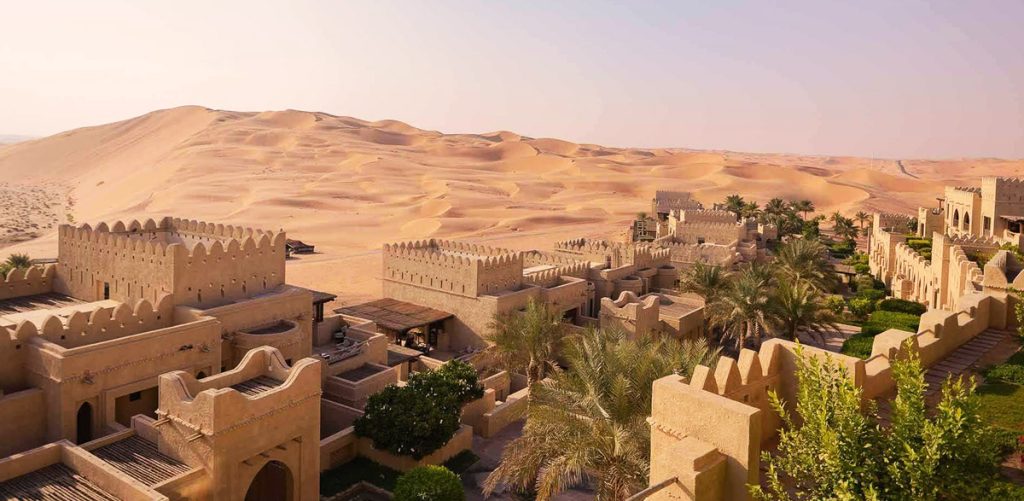
- Liwa Oasis: A lush region on the edge of the Empty Quarter, with palm groves and old forts. The sheer scale of the dunes here makes it a favorite for off-road adventures and desert photography.
- Al Ain: Known as the “Garden City” of the UAE, Al Ain is a refreshing escape from the capital with its greenery, cooler climate, and cultural treasures. Combined with the Al Ain Oasis and nearby museums, the city feels worlds away from Abu Dhabi’s urban pace—a mix of nature, tradition, and living heritage.
Spotlight: Al Ain, the Garden City
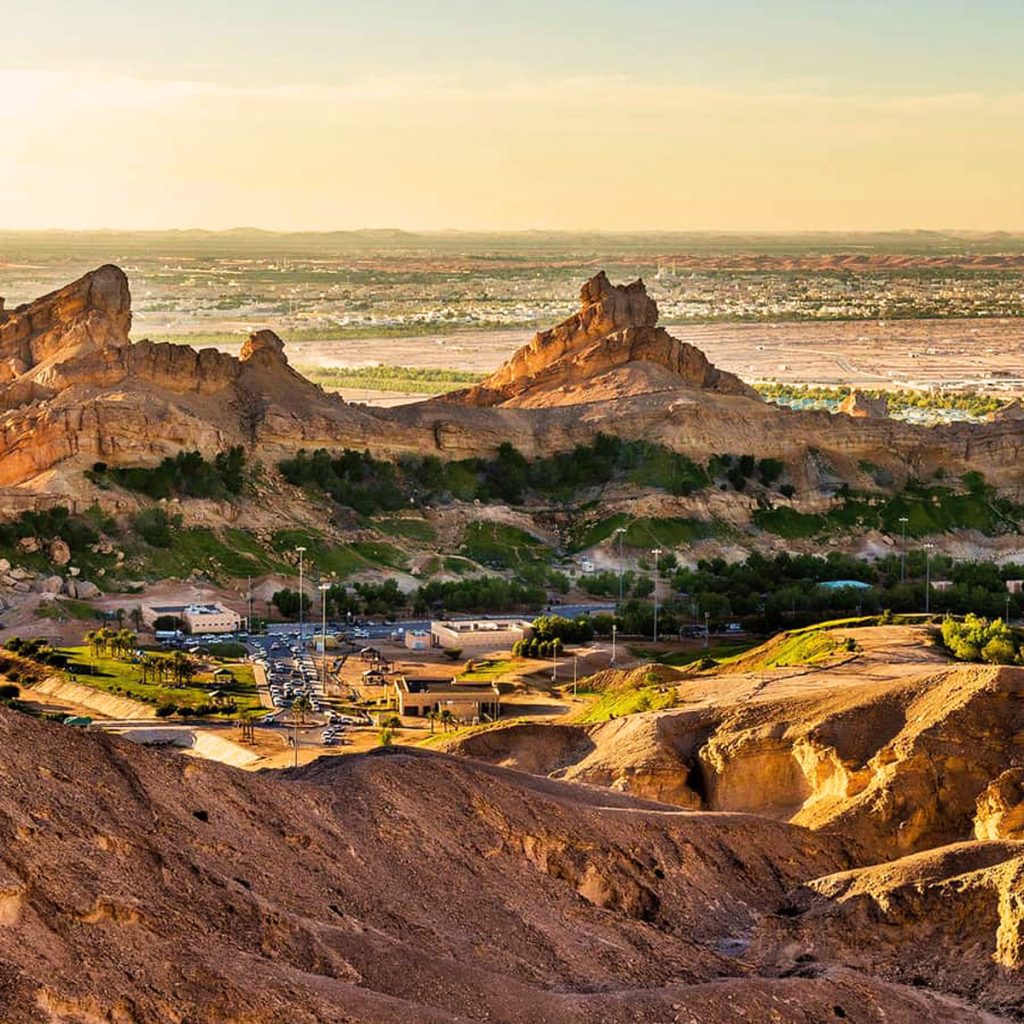
Al Ain is a UNESCO-listed heritage city and one of the UAE’s most rewarding day trips, offering a glimpse into the country’s roots.
- Jebel Hafeet – A towering limestone mountain with a winding road perfect for scenic drives. At the summit, panoramic views stretch across the desert, while ancient tombs at the base speak to millennia of history.
- Green Mubazzarah Hot Springs – Nestled at the mountain’s foot, these thermal springs are a natural wonder. Locals and visitors alike relax in the mineral-rich pools, a soothing experience framed by rugged peaks.
- Al Ain Camel Market – A lively and authentic marketplace where traders haggle over camels. It’s one of the few places left where you can witness this traditional practice firsthand.
- Al Ain Oasis – Spanning 3,000 acres with more than 147,000 date palms, the oasis is shaded, serene, and sustained by the ancient falaj irrigation system. Walking its cool pathways feels like stepping into another world.
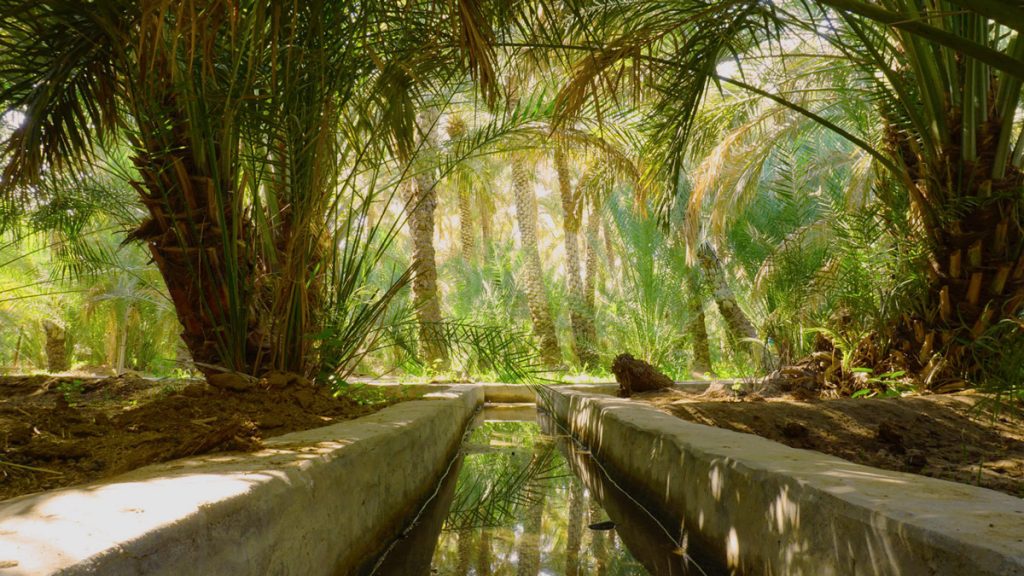
Together, these experiences make Al Ain more than just a day trip—it’s a journey into the UAE’s cultural heartland.
Beaches and Leisure
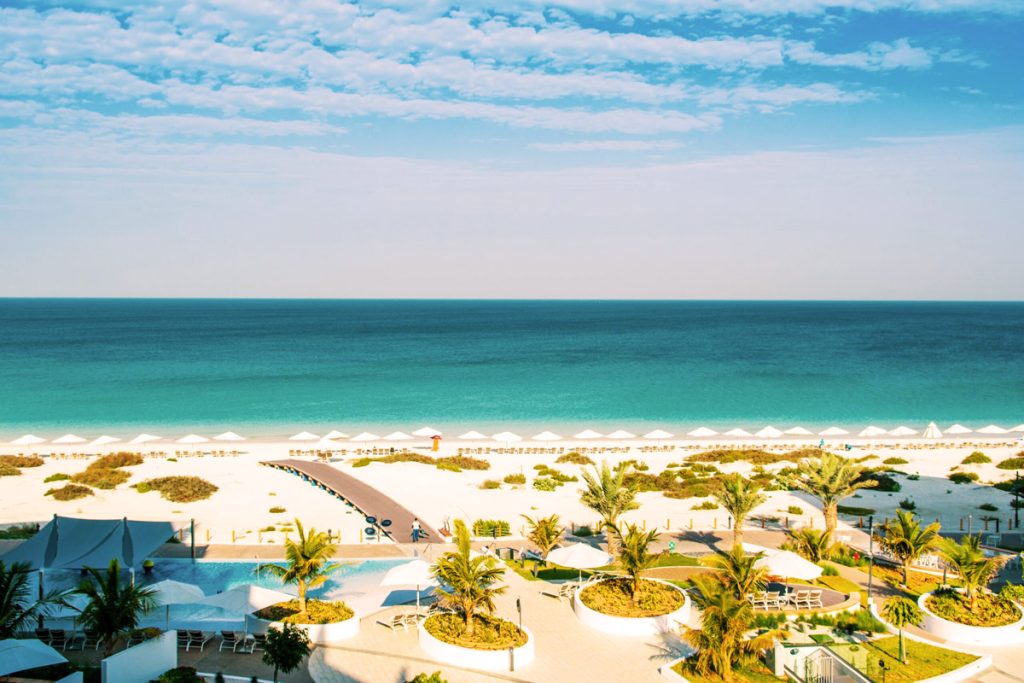
Abu Dhabi shines when it comes to relaxation by the water.
- Saadiyat Beach: Pristine, natural, and occasionally home to nesting turtles.
- Corniche Beach: Family-friendly and right in the city, with turquoise waters and soft sand.
- Yas Beach: More lively, with beach clubs, bars, and water sports.
Nightlife and Shopping
While more reserved than Dubai, Abu Dhabi offers elegant nightlife and high-end shopping.
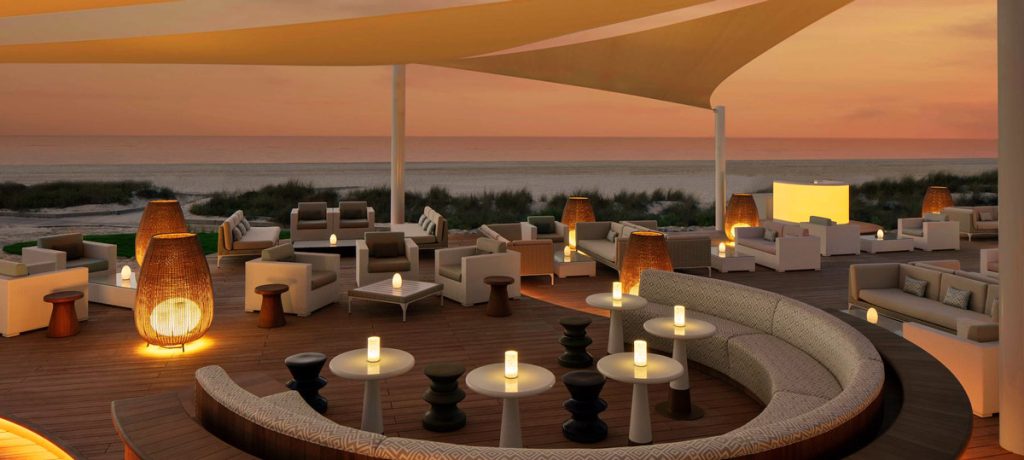
Nightlife
- Buddha-Bar Beach (St. Regis Saadiyat Island) – A beachfront extension of the iconic Buddha-Bar brand, offering upscale dining, cocktails, and live DJs right on Saadiyat’s pristine shoreline.
- Ray’s Bar (Etihad Towers) – A chic rooftop spot on the 62nd floor with panoramic city and sea views, perfect for cocktails at sunset.
- Penelope’s (Yas Marina) – A French Riviera-inspired jazz bar and piano lounge, mixing vintage glamour with modern cocktails and live music overlooking the marina.
- Zuma Abu Dhabi (The Galleria) – Known globally, Zuma’s bar and lounge are as famous as its dining, offering a chic, high-energy atmosphere for upscale evenings.
- Diablito Yas Marina – Mediterranean rooftop lounge with premium cocktails, DJ sets, and sleek interiors, popular with the yacht crowd.
- Hakkasan Lounge at Emirates Palace – A glamorous lounge that pairs fine dining with signature cocktails in an opulent setting.
- The Annex at The Abu Dhabi Edition – A trendy multi-level lounge with a rooftop terrace, live music, and creative drinks.
- Eclipse Terrace Lounge (Four Seasons) – Stylish and laid back, this poolside rooftop lounge offers creative cocktails and a vibrant atmosphere with views over Al Maryah Island.
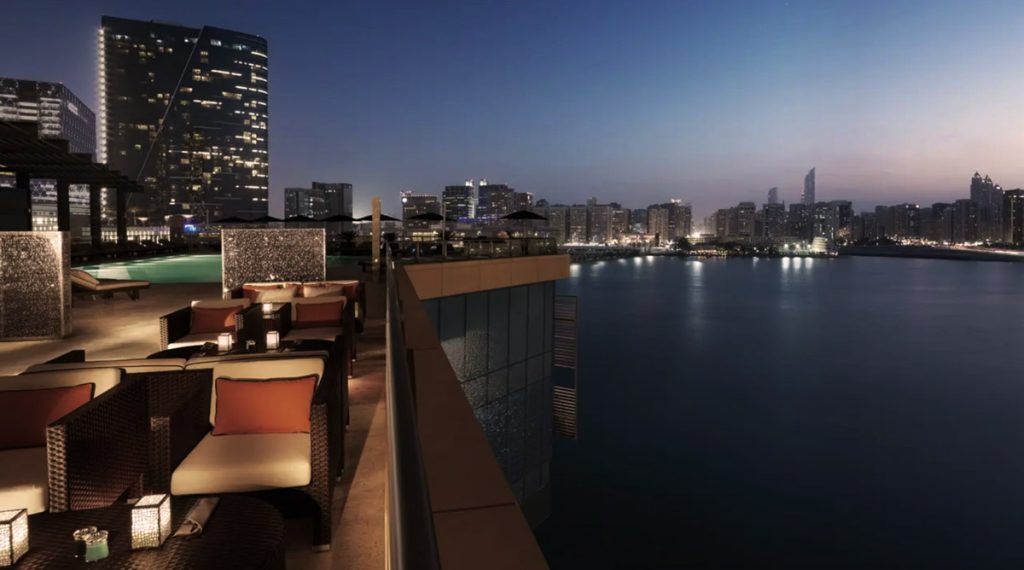
Shopping
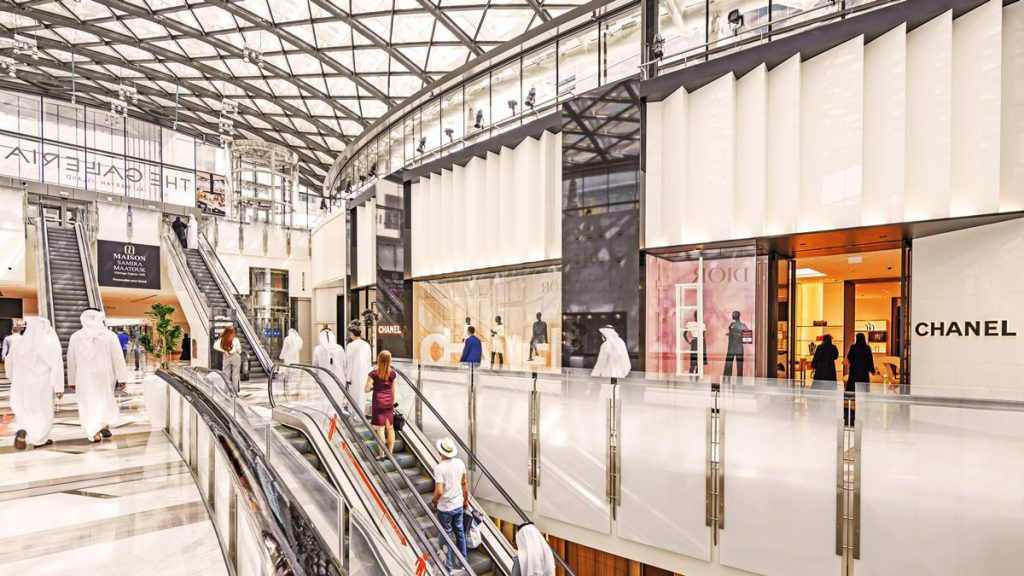
- The Galleria Al Maryah Island – Abu Dhabi’s most luxurious shopping destination, home to designer brands like Louis Vuitton, Chanel, and Dior, alongside fine dining and waterfront views.
- Yas Mall – The largest mall in Abu Dhabi, located next to Ferrari World, with hundreds of stores, family entertainment, and dining options.
- Marina Mall – A mix of mid-range and high-end stores, plus a central location near the Corniche and impressive views from its observation deck.
- World Trade Center Souk – A modern reinterpretation of a traditional market, selling handicrafts, spices, textiles, and souvenirs.
- Gold Souk (Madinat Zayed Shopping Centre) – Famous for dazzling jewelry shops offering everything from delicate designs to bold statement pieces in gold and precious gems.
- Souk Qaryat Al Beri – An atmospheric canal-side bazaar near the Shangri-La Hotel, with boutiques selling perfumes, jewelry, and traditional gifts in an Arabian setting.
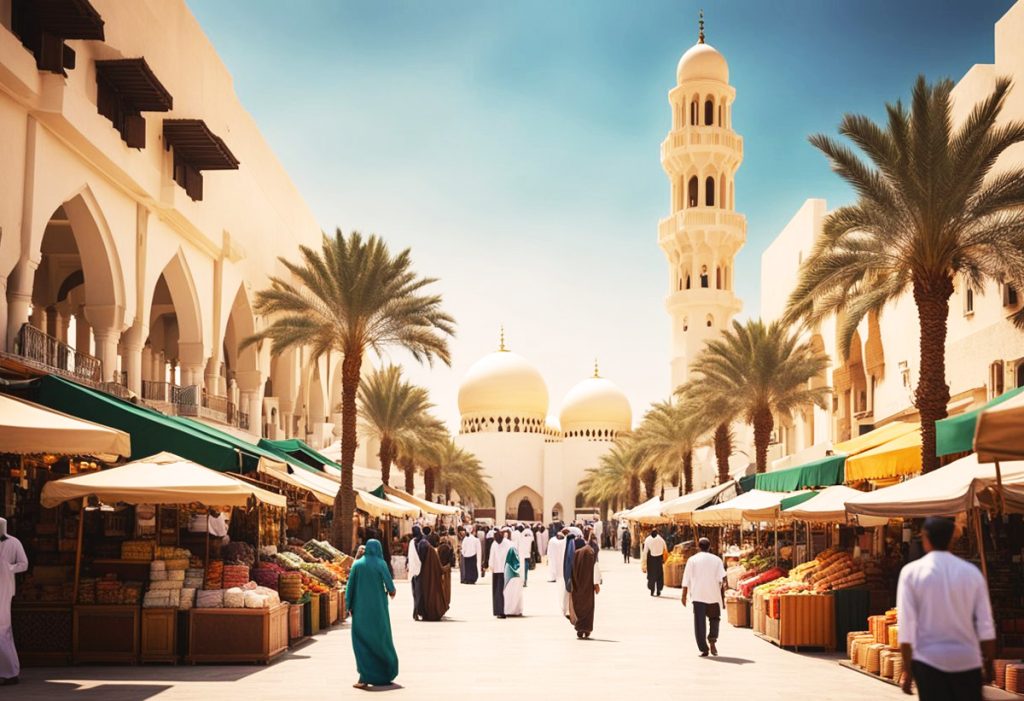
Practical Tips
- Dress Code: While Abu Dhabi is cosmopolitan, modest clothing is appreciated, especially in cultural and religious sites.
- Getting Around: Taxis are affordable, but renting a car is convenient for exploring beyond the city.
- Best Time to Visit: November to March brings cooler weather perfect for outdoor activities.
Closing Thoughts

Abu Dhabi doesn’t try to compete—it simply shines in its own way. From the serenity of the Grand Mosque to the futuristic Louvre dome, from hammam rituals to the wild safaris of Sir Bani Yas, it’s a city that invites you to move at its rhythm. Every corner tells a story of heritage woven with vision, making Abu Dhabi a destination worth savoring slowly.





